Best fast-growing hedges – 10 ideas for speedy structure and beautiful boundaries
Fast-growing hedges can help to add interest and create privacy in any yard, perfect for gardeners seeking quick results
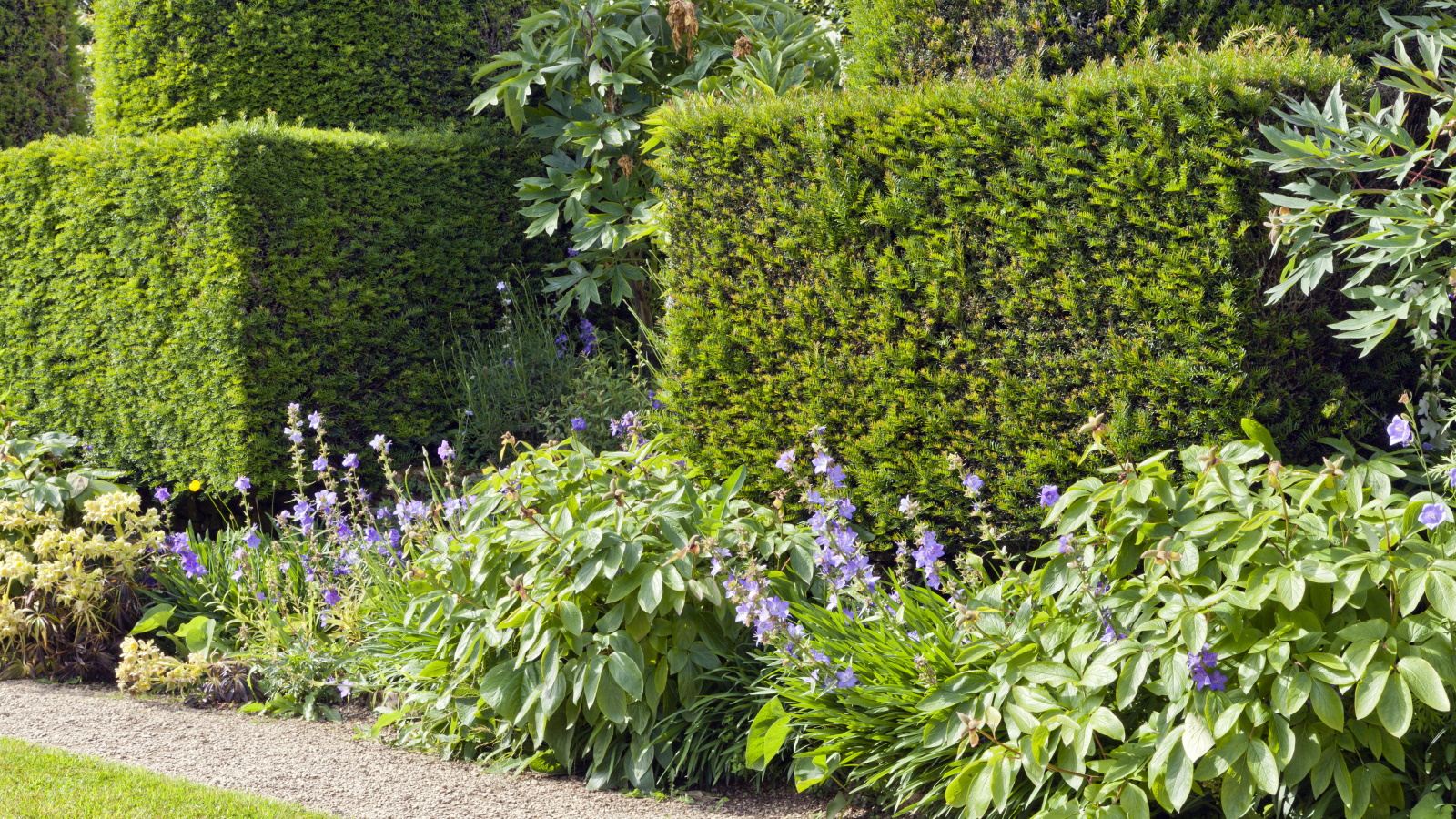
- 1. Purple fast-growing hedges
- 2. Fragrant fast-growing hedges
- 3. Fast-growing hedges for winter color
- 4. Hedges for year-round privacy
- 5. Best fast-growing hedges for statement blooms
- 6. Prettiest fast-growing hedges
- 7. Best fast-growing hedges for early spring color
- 8. Best fast-growing hedges for greenery
- 9. Best fast-growing hedges for wildlife
- 10. Best fast-growing flowering hedge for color
- FAQs

Thomas Rutter
Fast-growing hedges can rapidly transform your backyard. In a short space of time, quick-growing plants can help define the boundaries of your property, while also enhancing privacy and supporting local wildlife.
If you are looking for backyard landscaping ideas, fast-growing hedges can quickly add structure and shape to your yard. Fortunately for gardeners, some of the best hedging plants are quick-growers, adding height and visual interest to any plot.
'Fast-growing hedges can be sheared into geometric shapes or allowed to grow naturally,' says garden expert Melinda Myers. 'If you like the formal clipped look consider plants that tolerate this type of pruning, such as yew. For an informal or natural look that would befit cottage garden ideas, keep pruning to a minimum.' Here, we share some of the best fast-growing hedges that will add impact to any yard.
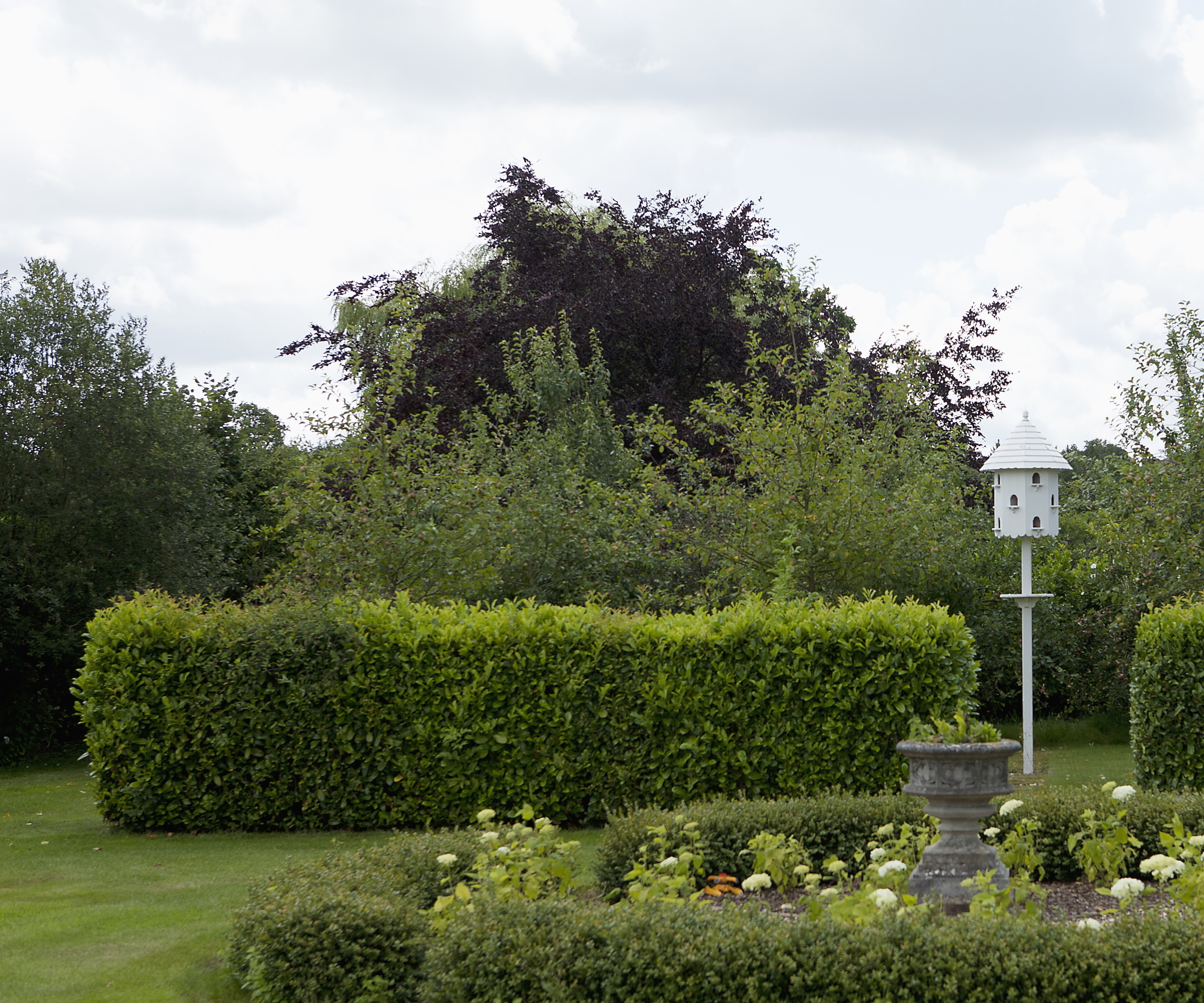
Best fast-growing hedge ideas
Fast-growing hedges are an ideal solution for gardeners who have recently moved into a new home. Your only challenge will be to keep them in check, as many of these hedges can quickly take over. However, with regular pruning and shaping, you can keep your hedge looking good and under control.
When considering how to plan a garden, hedges should be a key consideration. 'Planting fast-growing hedges at your boundaries is a great idea,' says Period Living garden expert, Leigh Clapp. 'They are good for wildlife and the environment by absorbing pollution. I recommend using mixed wildlife hedging in rural areas and dense evergreens in the urban environment.'

Melinda Myers has over 30 years of horticulture experience and has written over 20 gardening books. She is a nationally known gardening expert, appearing on TV and radio, and working as an author and columnist.

Leigh Clapp is a professional photographer with over 25 years experience, primarily as a garden specialist photojournalist but also with food and travel. She delights in exploring gardens, discovering the tiny elements to their overall essence and meeting lots of enthusiastic gardeners along the way.
1. Purple fast-growing hedges

Often known as 'the purple bush', loropetalum shrubs make for eye-catching fast-growing hedges. With striking purple leaves, this plant offers a stunning contrast to the traditional green hedging.
Growing best in US hardiness zones 7 to 11, this hedge is a low-maintenance option for gardeners. Plant this hedge in full sun, which will enhance the purple coloring of this plant. Loropetalum will also be more likely to thrive in gardens subject to long, hot summers.
Loropetalum shrubs are available to buy online from Perfect Plants.
2. Fragrant fast-growing hedges
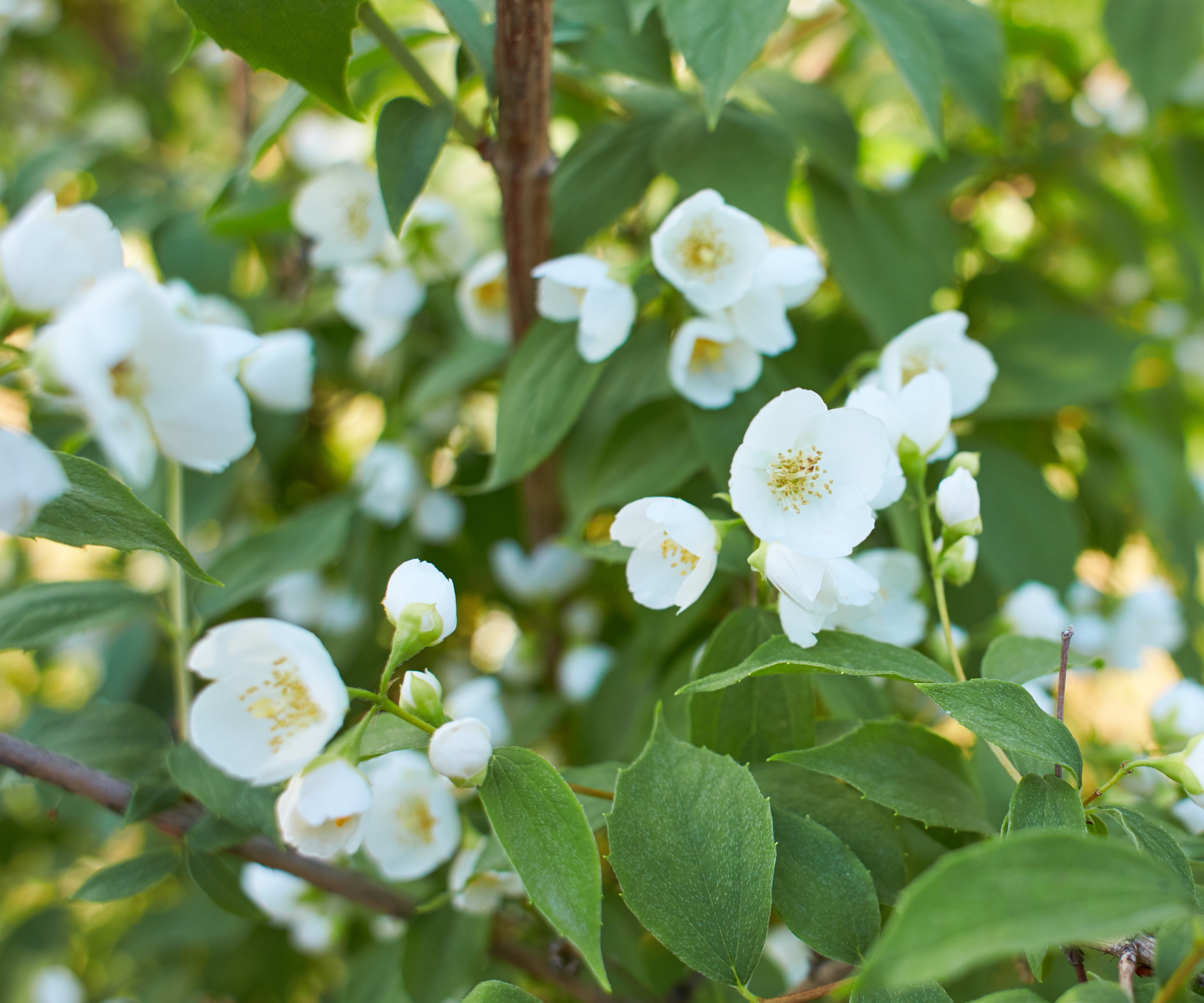
Mock orange plants, also known as Philadelphus, are celebrated for their fragrant summer blooms. If you are seeking sensory garden ideas, mock orange shrubs should be a consideration.
These plants typically grow best in US hardiness zone 4 to US hardiness zone 7. Growing more than two feet per year, mock orange plants are exceptionally fast-growing hedges.
'Mock orange is a deservedly popular medium-sized shrub renowned for its scented white flowers that bloom from May through to July,' says Leigh Clapp. 'It will grow best in full sun or part shade, with a preference for well-draining soil.'
Mock orange plants are available from Nature Hills.
3. Fast-growing hedges for winter color
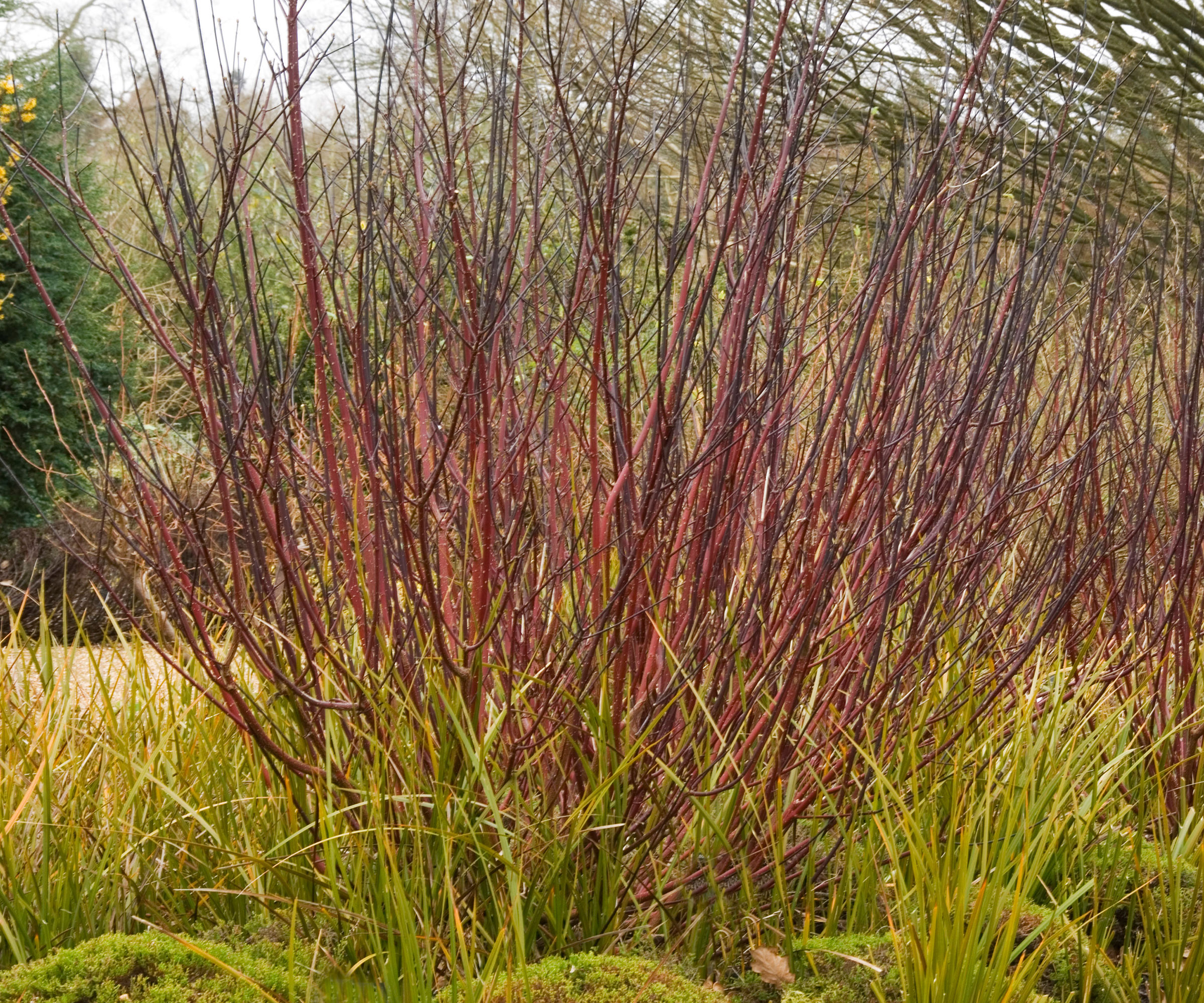
A favorite plant that is ideal for those seeking winter garden ideas, the red twig dogwood plant, Cornus sericea, makes for a vibrant display when grown at the boundary of a yard. This dogwood looks just as good in winter as it does in the height of spring.
Cornus sericea, has a dense twiggy structure, and so can be used by gardeners seeking garden privacy ideas. This hardy dogwood can be grown in cooler regions down to US hardiness zone 3.
Cornus sericea plants are available from Nature Hills.
4. Hedges for year-round privacy
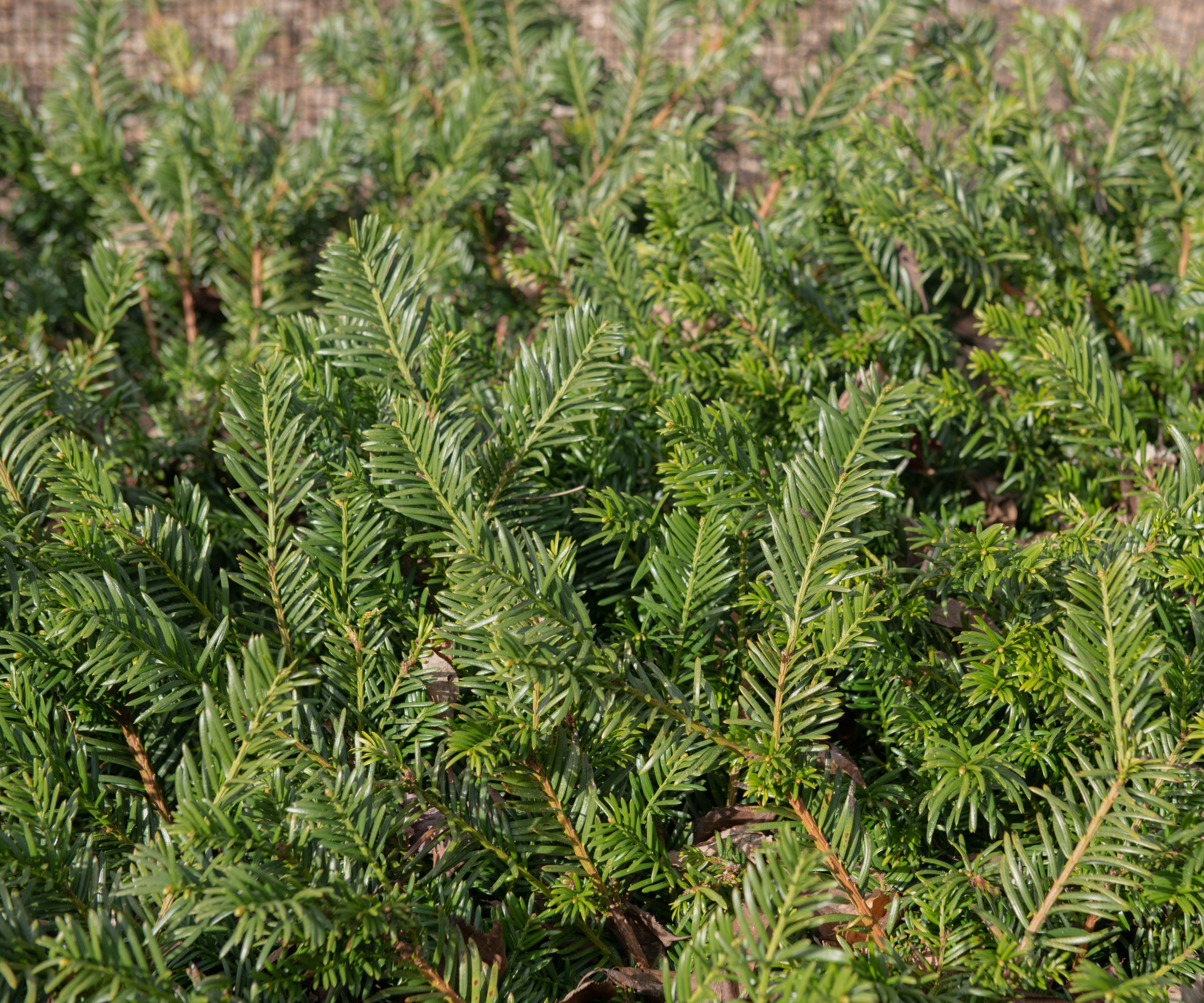
If you are wondering what the best trees for privacy and screening in a backyard are, then choosing a dense, evergreen hedge is important. Yew, for example, as seen in the image above, is an ideal option, that will maintain its foliage throughout the year, screening your boundaries from passersby.
Yew plants can be grown in US hardiness zone 4 to 7. What's more, they are a versatile hedge, able to grow in full sun or full shade. Yew shrubs are available from Nature Hills.
5. Best fast-growing hedges for statement blooms
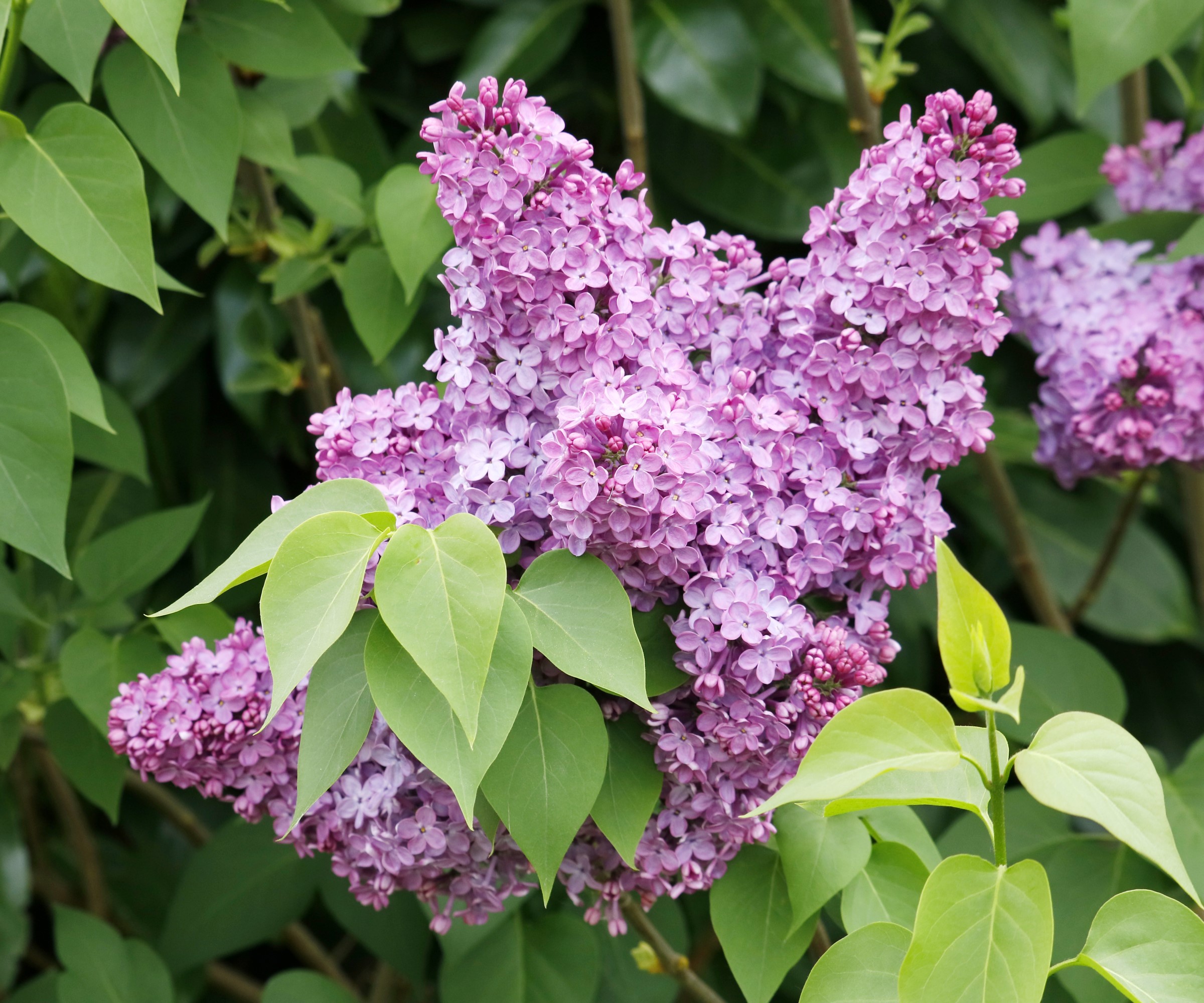
Lilac is a beautiful addition to the garden with its sweet fragrant smell and large lilac blooms that bring joy every spring. Lilac plants can be grown in US hardiness zones 3 to 7. They can be grown as hedging, preferring a fertile, well-draining soil in a full sun position.
The trick with growing lilac as hedging is knowing how to prune lilac to maintain good shape and compact, dense growth. Eventually, these plants can reach 10 feet tall if they are happy.
Lilac shrubs can be bought online from Nature Hills.
6. Prettiest fast-growing hedges
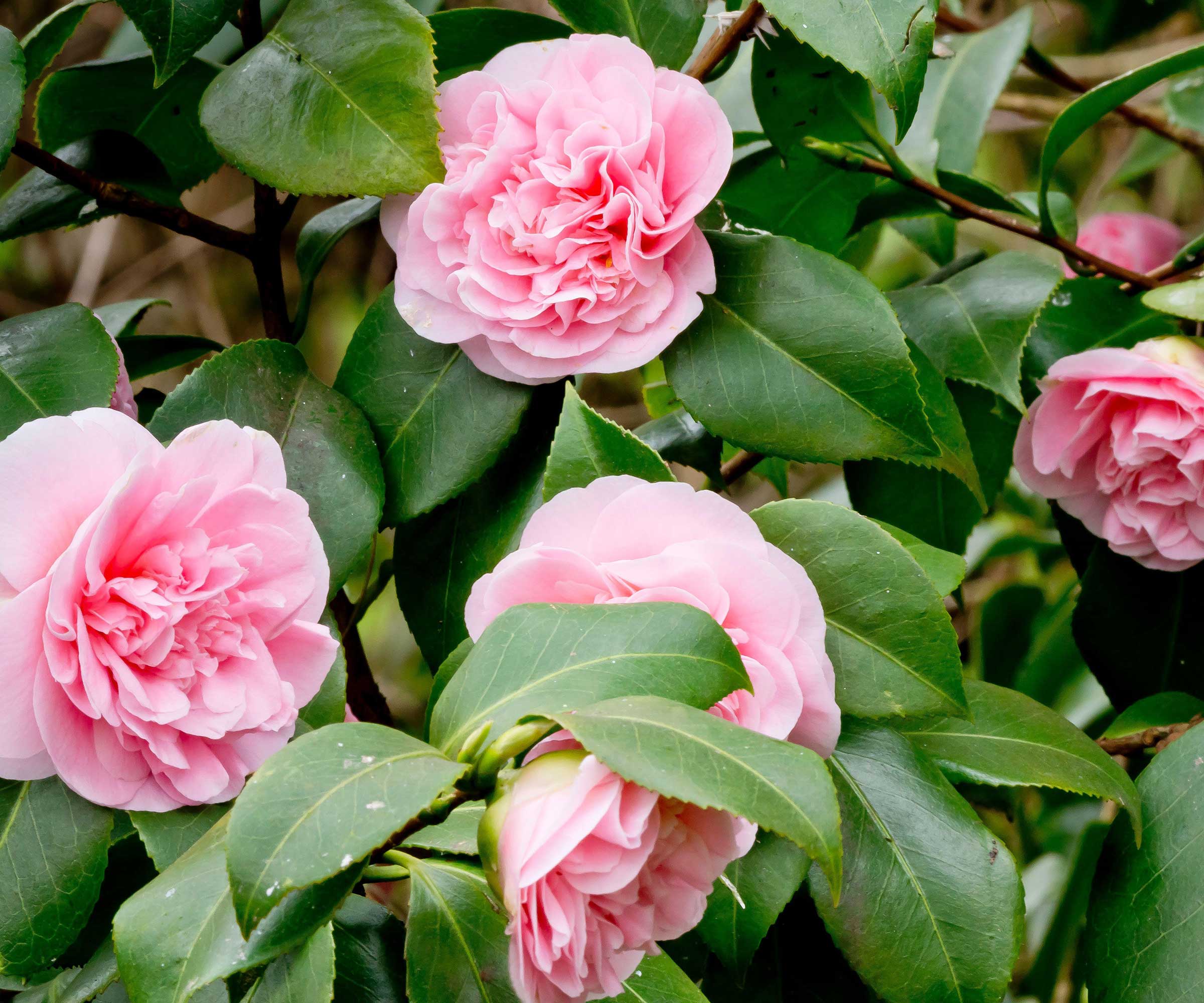
If you want fast-growing hedges that also bring beauty to the garden, then camellia hedges are the plant to pick. Camellias are also some of the best winter plants for pots and borders, largely because they are evergreen with stunning winter flowers.
As with any addition to your garden, knowing how to care for this brilliant winter flowering shrub is vital. Particular care should be given to learning how to prune camellia, as this will keep these fast-growing hedges under control and looking their best.
Camellia plants are available from Nature Hills.
7. Best fast-growing hedges for early spring color
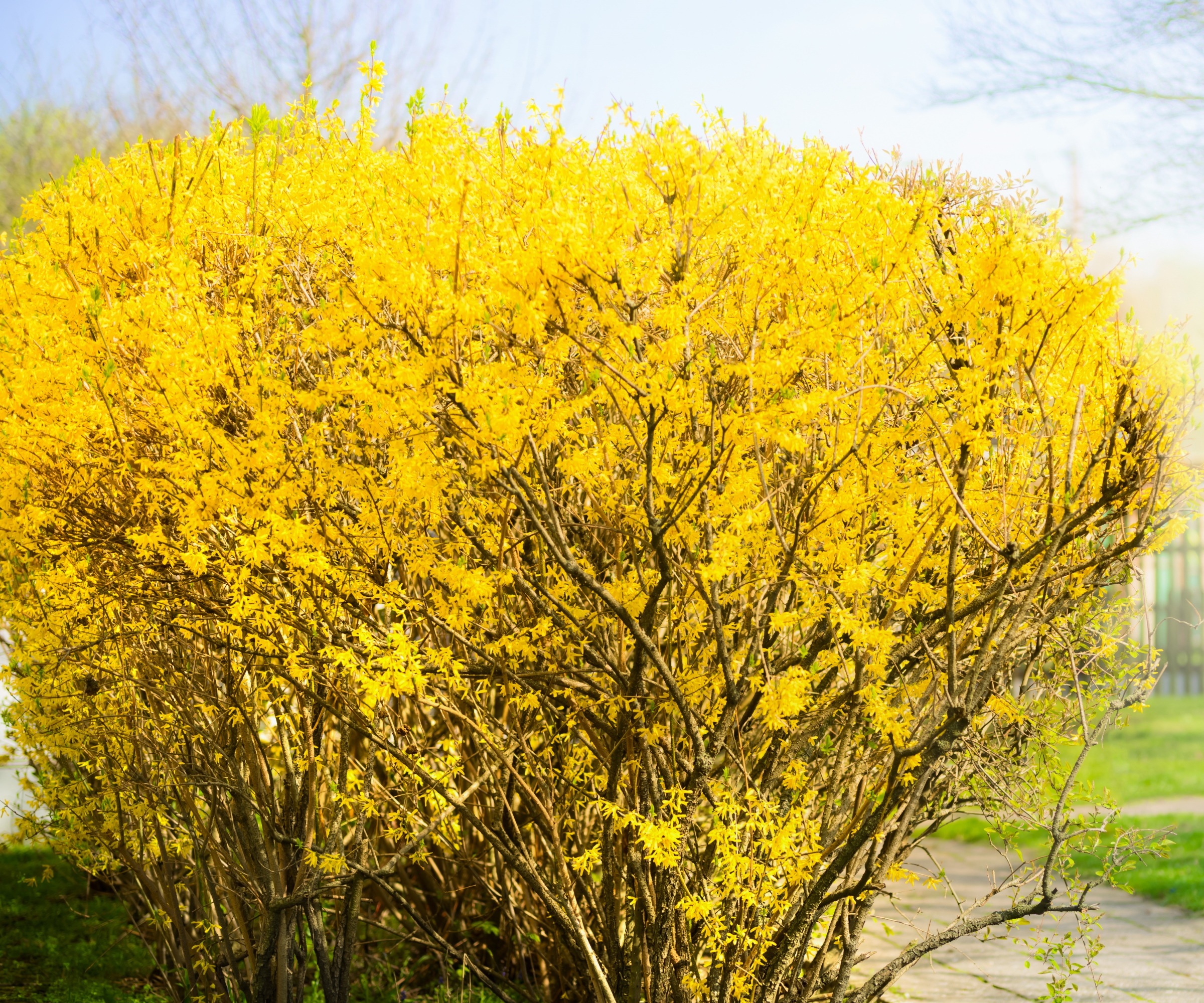
Forsythia is a great choice for fast-growing hedges. When considering how to grow forsythia, it is one of the hardiest fast-growing hedges, growing best in US hardiness zone 5 through to zone 8. It will reach heights of up to 10 feet and will grow approximately two feet per year.
Knowing how to prune forsythia is essential for impressive blooming next year. It is best to prune as soon as the blossom fades, typically around mid-spring, giving your plant lots of time to regrow during the growing season.
Forsythia shrubs are available online from Perfect Plants.
8. Best fast-growing hedges for greenery
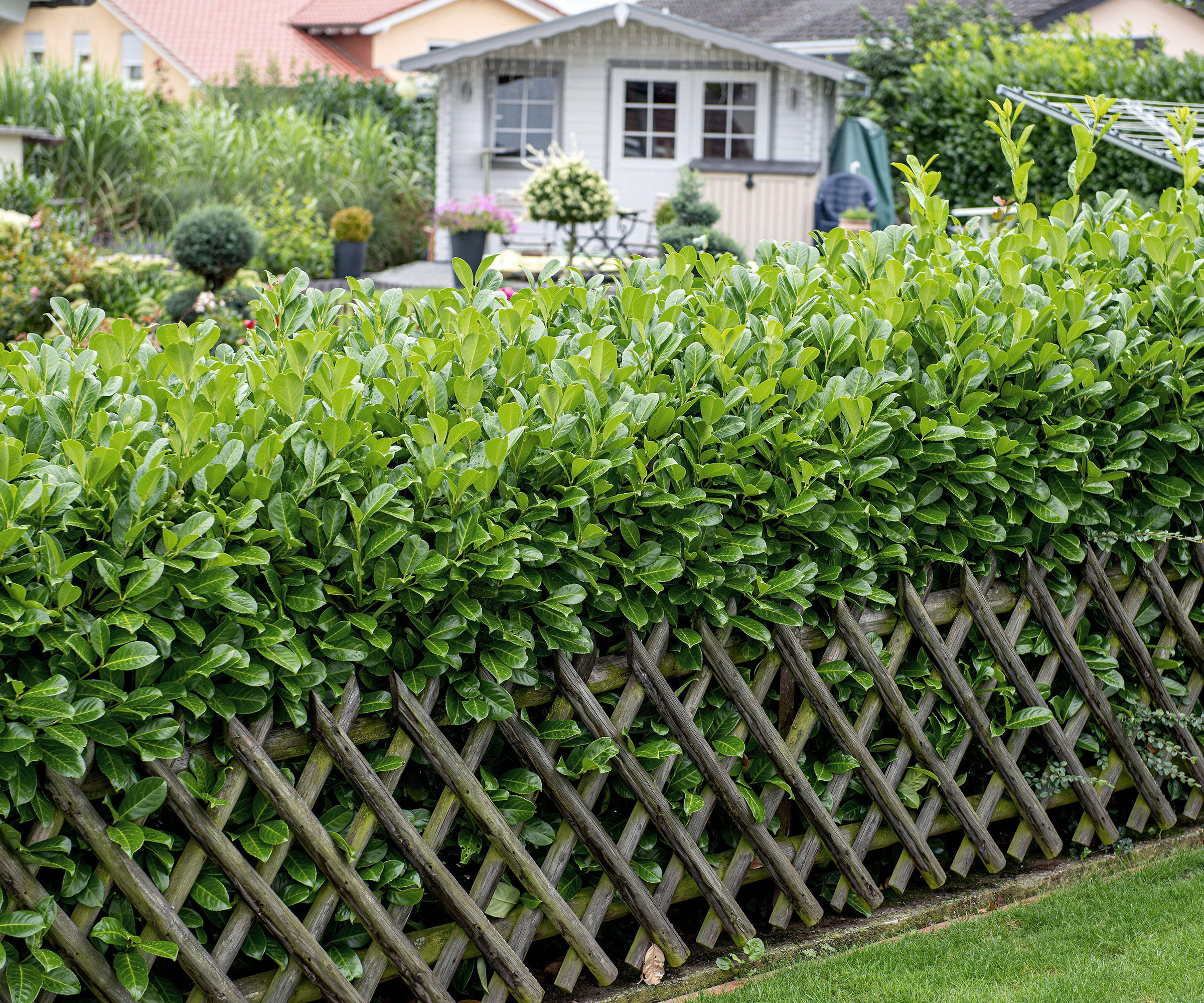
Laurel is the quintessential green hedge for any yard. Laurel shrubs have large, glossy green leaves, and when planted as hedging can create a dense border. Lauren plants grow best in US hardiness zone 8 to US hardiness zones 10 and above.
Smartly clipped laurel hedges and topiary specimens are characteristic of English garden ideas and offer a good alternative to the slower-growing box hedges.
Laurel shrubs are available to buy online from Nature Hills.
9. Best fast-growing hedges for wildlife
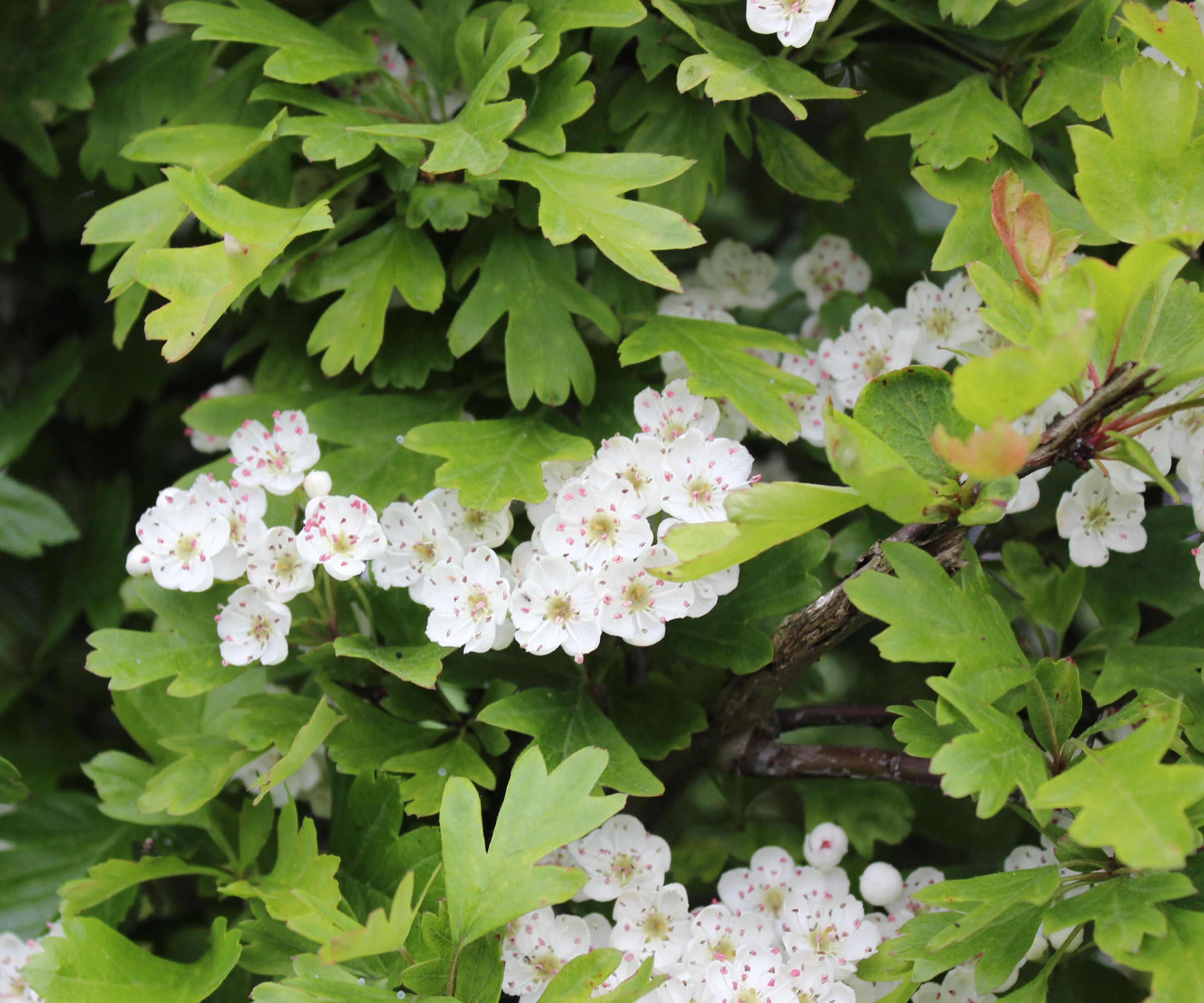
'One of the most popular and prevalent hedgerow shrubs that grow throughout the UK but also will grow well across much of North America is hawthorn,' says Leigh Clapp. The hawthorn will grow between one and two feet per year meaning it will quickly form a dense hedge at the edge of your plot.
The hawthorn is part of the rose family and is loved by gardeners for its pretty nectar-rich flowers and bright red-orange fall berries. 'The Hawthorn provides food for some 150 different insect species and is tolerant of pollution and exposed sites,' continues Leigh Clapp. This makes hawthorn the ideal plant for those gardeners seeking wildlife garden ideas.
10. Best fast-growing flowering hedge for color
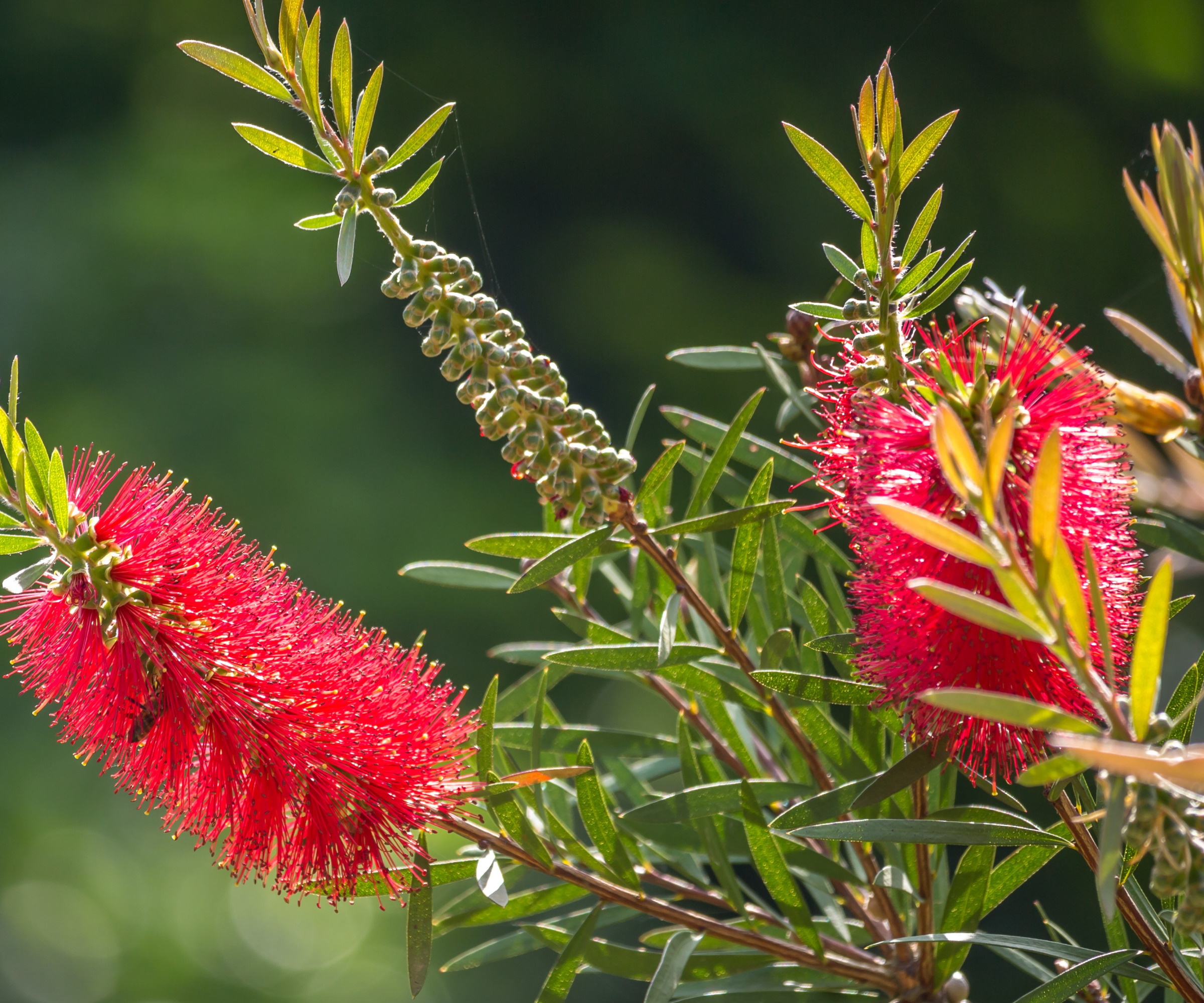
Callistemon, or bottlebrush shrubs, are striking plants with beautiful blooms. Growing approximately 1 foot per year, this stunning plant explodes in an array of vibrant, feathering flowers in spring, and makes for the perfect accompaniment for other tropical garden ideas.
Using plants with stunning flowers as part of hedging can help to soften your boundaries, by creating a more natural backdrop in your yard as well as offering beneficial food and habitat for wildlife.
Bottlebrush plants can be purchased online from Nature Hills.
FAQs
What is a good privacy hedge?
Camellia, laurel and hawthorn are all good privacy hedges. These fast-growing hedges are all evergreen, which will help to screen your yard and home. These fast-growing options will ensure that you are not waiting several years to achieve the level of privacy you desire.
When should you plant hedges?
It is best to plant hedges in the fall when the ground is still warm. Different plants will have different planting times, so you should always double-check the planting directions for your specific plant.
Selecting fast-growing hedges for your yard can help you quickly create shelter and privacy for your boundaries. For additional hedge care and growing advice, see our guide on how and when to fertilize hedges, to give your plants a boost this year.
Sign up to the Homes & Gardens newsletter
Design expertise in your inbox – from inspiring decorating ideas and beautiful celebrity homes to practical gardening advice and shopping round-ups.

Having graduated with a first class degree in English Literature, Holly started her career as a features writer and sub-editor at Period Living magazine, Homes & Gardens' sister title. Working on Period Living brought with it insight into the complexities of owning and caring for period homes, from interior decorating through to choosing the right windows and the challenges of extending. This has led to a passion for traditional interiors, particularly the country-look. Writing for the Homes & Gardens website as a content editor, alongside regular features for Period Living and Country Homes & Interiors magazines, has enabled her to broaden her writing to incorporate her interests in gardening, wildlife and nature.
- Thomas RutterContent Editor
-
 5 things people with clean upholstery always do – simple, quick and oh-so-effective
5 things people with clean upholstery always do – simple, quick and oh-so-effectiveEnsure your furnishing looks clean year-round with these expert tips
By Seraphina Di Mizzurati Published
-
 7 native perennials to plant in April – for glorious flowering displays to attract bees, butterflies, and hummingbirds
7 native perennials to plant in April – for glorious flowering displays to attract bees, butterflies, and hummingbirdsDiscover some of the best perennials to plant in April to make your garden a hotspot for wildlife
By Drew Swainston Published